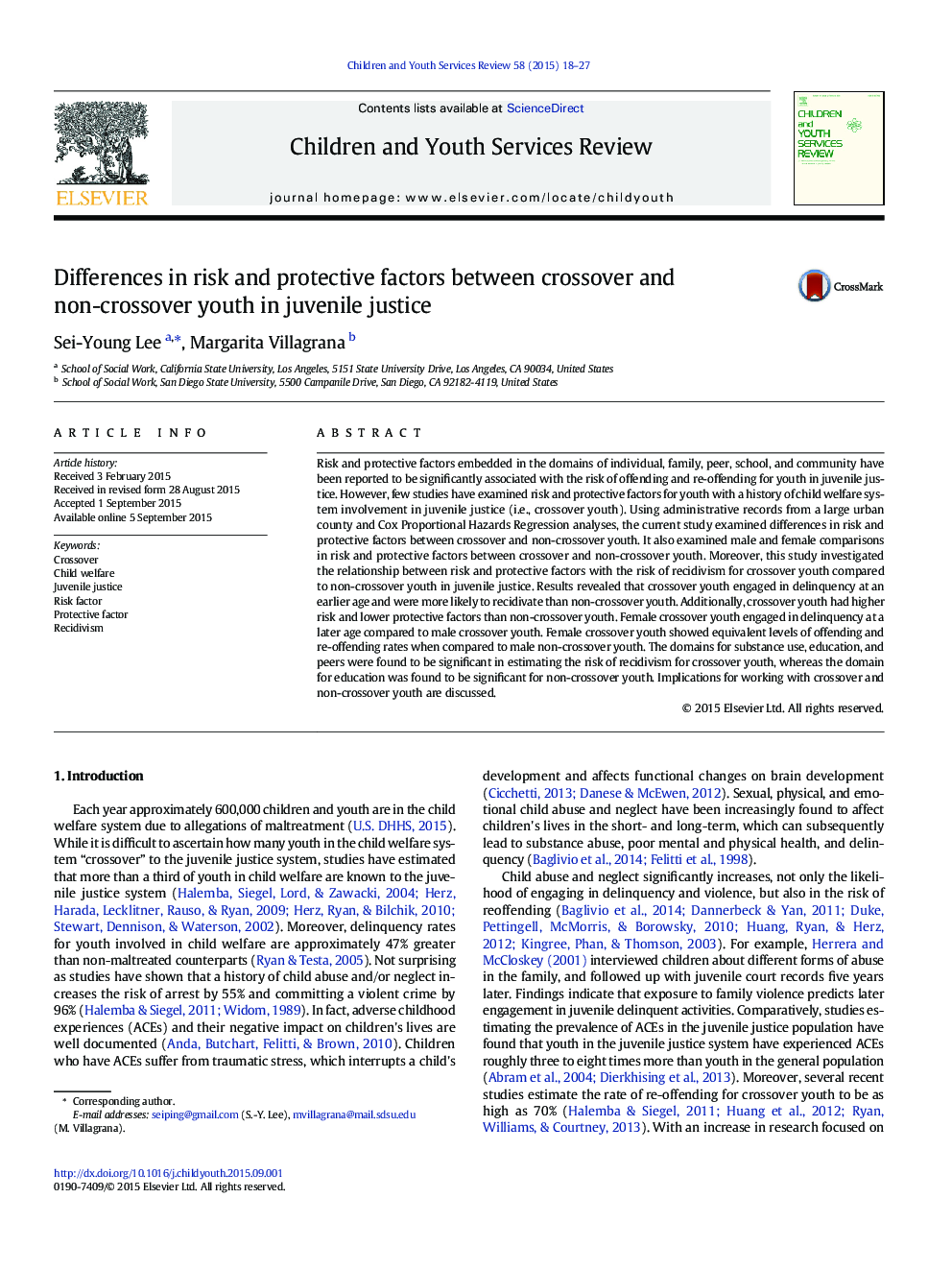| کد مقاله | کد نشریه | سال انتشار | مقاله انگلیسی | نسخه تمام متن |
|---|---|---|---|---|
| 345914 | 617773 | 2015 | 10 صفحه PDF | دانلود رایگان |
• Crossover youth were more likely to recidivate than non-crossover youth.
• Crossover youth had higher risk and lower protective factors than noncrossovers.
• Crossover youth were placed in out of home settings more than noncrossovers.
• Crossover females had similar patterns of delinquency with non-crossover males.
• Substance use, peer, and education were predictors of the risk of recidivism.
Risk and protective factors embedded in the domains of individual, family, peer, school, and community have been reported to be significantly associated with the risk of offending and re-offending for youth in juvenile justice. However, few studies have examined risk and protective factors for youth with a history of child welfare system involvement in juvenile justice (i.e., crossover youth). Using administrative records from a large urban county and Cox Proportional Hazards Regression analyses, the current study examined differences in risk and protective factors between crossover and non-crossover youth. It also examined male and female comparisons in risk and protective factors between crossover and non-crossover youth. Moreover, this study investigated the relationship between risk and protective factors with the risk of recidivism for crossover youth compared to non-crossover youth in juvenile justice. Results revealed that crossover youth engaged in delinquency at an earlier age and were more likely to recidivate than non-crossover youth. Additionally, crossover youth had higher risk and lower protective factors than non-crossover youth. Female crossover youth engaged in delinquency at a later age compared to male crossover youth. Female crossover youth showed equivalent levels of offending and re-offending rates when compared to male non-crossover youth. The domains for substance use, education, and peers were found to be significant in estimating the risk of recidivism for crossover youth, whereas the domain for education was found to be significant for non-crossover youth. Implications for working with crossover and non-crossover youth are discussed.
Journal: Children and Youth Services Review - Volume 58, November 2015, Pages 18–27
